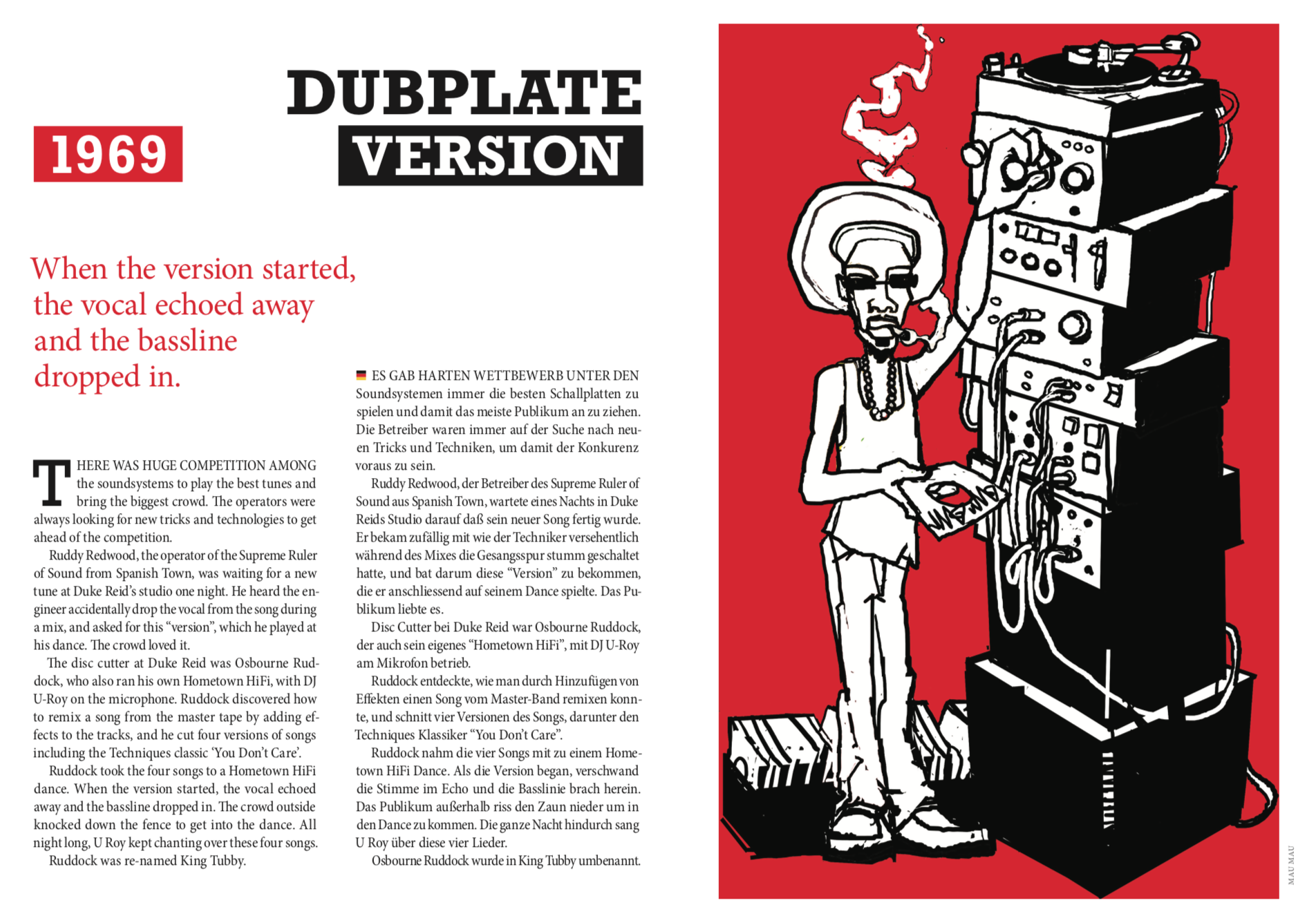7 - Dubplate Version
Sometimes on the soundsystem, we'd play with one deck on the amp stack - Mau Mau's pic is barely an exaggeration. If you're playing lots of 12" discomixes, and you've got a couple of sirens and a mic, it's perfect - it's definitely not for juggling style. I remember once a DJ visiting Berlin called up and asked if he could come and do a warm up. Sure, we said. He showed up just as the doors opened, and looked increasingly panicked at the realisation that there weren't two decks and a mixer at hand. He was a short dude and could barely reach to the one turntable. I told him we could get him a beer crate, but he started looking queasy and cleared off back to his hotel.
Like all kinds of famous reggae stories, there are several versions of the story of dub, and how it got started. Did someone really forget to add the vocals to a track? Instrumentals were already popular, plus a cheap way to produce a 45 without having to record two separate tracks: just stick the vocal on side A and the backing track on side B. But with the growing wizardry available in the studio, and high demand among soundsystems for one-away mixes, engineers started thinking about remixing tracks: dubplate version. The musicians were great: you could strip these tunes down to the bone and they still grooved. Dancers could float away in the mix, get a thrill when the guitars and keyboards bubbled back into the mix, or forget the drum and bass had dropped out of the tune only to crash back in again in heavyweight fashion. This pic from the inimitable Mau Mau. After the panel, a discomix scorcher from The Techniques (1968), complete with the dub version.
